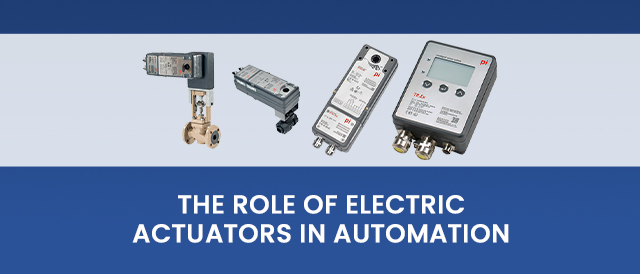Introduction: Understanding Actuators
Actuators are devices responsible for controlling and moving
mechanisms in automated systems. They convert electrical energy into mechanical
motion, enabling the precise positioning and operation of various components.
Electric actuators, specifically, utilize electric motors to generate
the required mechanical force. These versatile devices find application across
a wide range of industries, including manufacturing, aerospace, automotive, and
more.
Types of Actuators
Electric actuators come in different types, each designed to
fulfill specific requirements based on the application. Some common types of electric actuators include:
1) Linear Actuators
Linear actuators provide linear motion, allowing objects to
move in a straight line. They are widely used in applications that require
precise control over linear movement, such as opening and closing valves,
adjusting machine components, or actuating robotic arms.
2) Rotary Actuators
Rotary actuators, on the other hand, provide rotational
motion. These actuators convert electrical energy into rotary motion, making
them ideal for applications like turning valves, operating industrial robots,
or controlling the movement of conveyor belts.
3) Pneumatic Actuators
While this article primarily focuses on electric actuators,
it's worth mentioning pneumatic actuators. Pneumatic actuators use compressed
air to create mechanical motion, offering reliable and robust operation in
various industrial environments.
Electric Actuators in Automation
The integration of electric actuators in automation systems
brings numerous advantages. Their precise control and accuracy contribute to
enhanced productivity and efficiency. With electric actuators, manufacturers
can achieve repeatable and consistent motion, ensuring high-quality outputs.
Moreover, these actuators can be easily integrated with other automation
components, such as sensors and controllers, enabling seamless communication
and coordination within the system.
The Significance of Atex Certification
Atex certification holds great significance in industries
where explosive atmospheres may be present. It ensures that electric actuators
and other equipment used in potentially hazardous environments comply with
essential safety standards. Atex-certified actuators are designed to prevent
the ignition of flammable substances, providing an extra layer of safety in
applications such as oil and gas refineries, chemical plants, and mining
operations.
Measuring instruments play a crucial role in
automation systems by providing accurate data and feedback for optimal control.
These instruments enable monitoring and control of various parameters such as
temperature, pressure, humidity, and more. By integrating measuring instruments
into automation systems, manufacturers can ensure precise and efficient
operation while maintaining quality standards.
A Closer Look
Among the leading manufacturers of measuring instruments is
Kimo Instruments, renowned for its high-quality and reliable products. We
offers a wide range of instruments suitable for automation applications. Their
advanced sensors and controllers enable precise measurement and control,
enhancing the performance and accuracy of automated systems.
Conclusion
 Reviewed by Kimo Electronic
on
July 07, 2023
Rating:
Reviewed by Kimo Electronic
on
July 07, 2023
Rating:






No comments: